Hotels are places where people of different nationalities and cultural backgrounds converge and their restaurant options have to cater to different palates. But most of them also want to give guests a taste of the local dining culture, and properties in Singapore excel on this front.
Hoping to reflect the city-state’s multicultural nature through their food, these restaurants serve up specialised cuisines and have garnered fanfares. Many of them have served the same recipes for decades and their popularity has not waned a bit all these years.
North indian buffet
Taking a seat in the pristine white Tiffin Room of the Raffles Hotel to sample the North Indian buffet lunch, one cannot help but be awed by the hotel’s 120-year history, enriched with stories of visits by such world-famous writers as Joseph Conrad, Rudyard Kipling and Somerset Maugham. Its curry tiffin – meaning a light lunch – is a tradition that dates back to 1899.
The 1930s ambience remains in this elegant room regularly filled up with diners. Indeed, it is advisable to make a booking a couple of weeks before visiting. Five weekly menus are rotated and the wine list is customised to match the flavours and spices of North Indian fare. For a non-alcoholic choice of drink, the carrot and tomato juice mix with lemon is soothing and refreshing.
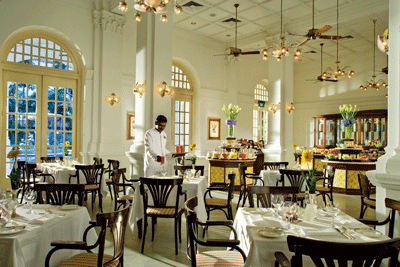
Onto the food, there is an array of light salads to start – prawns with mango, coriander, lemon juice and apple; and the green papaya relish with tamarind, coconut and sesame seeds are two examples. They are complemented by a range of unusual dressings such as the mango puree with mustard and pink peppercorn and olives. These wonderful delights might even convert those who don’t usually like salads.
It seems that Indian restaurants tend to be rather stingy with condiments, but it was not an issue here when we visited – pineapple with mint and spices; and green papaya cooked with sugar, onion seed and red chilli were served in abundance.
The main courses are divided into vegetarian on round plates and meat on oval plates, allowing easy orientation. The chef’s pride was the dhal makhani (black lentils cooked overnight) but we approved of every dish we had, including the light murgh dhaniawala (chicken with yoghurt and coriander) and the jhinga moilee (prawns in mustard seed, curry leaves and coconut sauce). To round up the meal, there are more beautiful and heavenly desserts than even the biggest sweet tooth could hope for.
Nonya cuisine
Another hotel with a long-running tradition is Copthorne King’s Hotel. For 40 years the Princess Terrace Café here has been serving its Penang buffet, which features a mixture of Indian, Malaysian, Chinese and Nonya cuisines, and the restaurant is as packed as ever. Colourful dishes and even more eye-catching Nonya kueh (bite-size dessert items) are served in the slightly rustic wooden interior to make for a casual and family-friendly dining experience.
The restaurant regularly updates the 50 to 60 items in the spread, which also includes 10 soups and appetisers. Our favourite was the refreshing rojak, a salad made with mango, star fruit, cuttlefish, cucumber, turnip and pineapple. The signature Penang laksa, a variety served in a sour fish stock instead of coconut gravy, is prepared with tamarind sauce and sardines.
There is a range of rather unusual dishes such as char moey (which literally means “fried porridge” but is actually congee made from browned rice), soft spring roll or pastry cup with vegetables and minced pork; nasi ulam (rice with 10 different kinds of herb) and Hokkien mee with prawns, which includes two different kinds of noodle together for an interesting mix of textures.
Chinese cuisine
Looking over Singapore’s skyline from the Pan Pacific hotel’s 37th floor, Hai Tien Lo has been attracting upmarket diners for almost 30 years. First made famous by Malaysian Chinese chef Yong Bing Ngen, this Chinese dining institution now is under the stewardship of chef Lai Tong Ping.
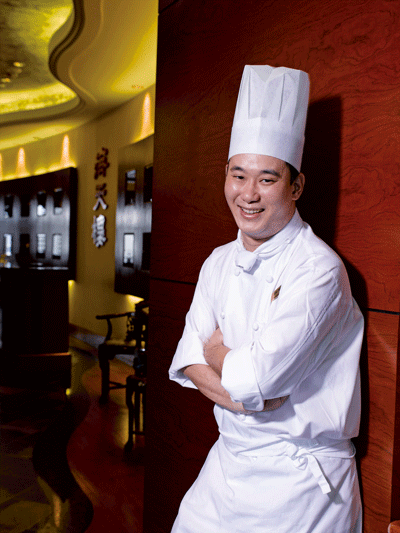
With a contemporary decor that cashes in on the magnificent view, the restaurant offers different menus and dining options for weekdays and weekends, ranging from dim sum and buffet to à-la-carte dishes.
We started with the succulent and tender pan-fried foie gras with a crispy crust, paired with sliced barbecued Beijing duck, and it instantly impressed us. Our choice of wok-fried asparagus with deep-fried enoki mushrooms was light but surprisingly flavoursome.
The restaurant’s signature dishes, such as the impeccably prepared and juicy roasted chicken and the double-boiled “mini Buddha jumps over the wall” prepared with sea cucumber, tender abalone, scallops and black truffle also left a lasting impression on us.
The delicate chilled crystal jelly with diced aloe vera and strawberries cooled and cleansed our palates at the end the meal without adding unnecessary calories.
Cantonese cuisine
Since 1988, Wah Lok Cantonese Restaurant has been serving up lip-smacking Cantonese fare in the same second-floor location in Carlton Hotel, and not even a recent major refurbishment has managed to dislodge or drastically alter it.
Messing with a culinary icon would certainly set its extremely loyal clientele up in arms. Despite competition from a plethora of rivals – posed not only by other hotels but outlets in the city’s numerous leisure precincts as well – Wah Lok continues to attract a sizeable crowd throughout the week.
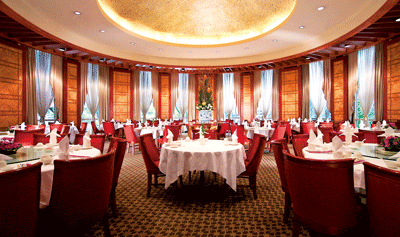
At the helm of Wah Lok is executive chef Ng Wai Tong, a 22-year restaurant veteran, who joined the team in late 2009.
Even on the night of a recent public holiday, when we dined there, the place was buzzing, not with the usual office types but families and a sprinkling of foreign guests. Reservations are an absolute must if you want a table at this restaurant that is one of Singapore’s enduring establishments.
The menu is a thick one, with the “Hong Kong Chef’s Recommendations” and “Dessert” bookending the usual staples such as “Shark’s Fin”, “Chicken and Pork”, “Vegetarian” and the like. For easier ordering, there are four set menus for four diners, but which can always be adjusted to any group size.
In true Hongkong style, most diners here order dim sum for lunch, but since my companion and I opted for a late dinner, we went for the à-la-carte menu. Our selections consisted of pan-fried Japanese scallop with asparagus (a house specialty), braised crabmeat wrapped with egg white, baked cod fish served on banana leaf, US pork chop in chef’s special sauce and braised noodles with live prawns, ginger and onion.
The scallop, delicately deep fried, set the stage for a delicious experience. Dishes are in bite-size portions, which help diners avoid filling up too quickly. The cod fish, flavourful and melting at first crunch, is highly recommended.
Hawker food
In 1971, the upmarket Mandarin Orchard Singapore (formerly the Meritus Mandarin) decided to introduce hawker fare, popular dishes sold from street stalls, to the menu of one of its outlets Chatterbox. It was a bold step to make as these dishes had never been offered in hotel settings before then. But the gamble paid off as the hawker dishes proved to be popular and made Chatterbox a well-known destination for Mandarin chicken rice. Loyalists swear by the recipe here, calling it the best in town.
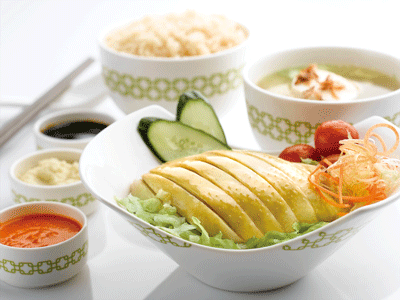
The dish is so popular that after almost 40 years, the hotel continues to churn out 200 servings a day, with every portion consisting of one quarter of a 2.5kg boiled chicken and fragrant rice, complemented by a side of chilli sauce and home-made dark soy.
According to the chef, the preparation of the dish is in accordance with a classified recipe and done in a Zen frame of mind. “The different parts of the dish are cooked separately by different people, so that nobody knows the entire process,” chef Liew Tian Heong says. “The rice is cooked in chicken stock. If you cook rice only, concentrate on that. You have to have a very good attitude; you can’t rush, have to do it step by step.”
Another hawker specialty, purportedly invented by Chinese workers shipped to Malaysia to build the railways, is bak kut teh. It is a pork ribs stew cooked for hours with seven or eight different herbs, as the workers believed that the ingredients nourished their exhausted bodies. No two bak kut teh recipes are the same and chef Liew’s is light, clear and very tasty. Sipping the soup, one might be convinced by the potion’s alleged remedial power.
The ubiquitous laksa noodles in spicy coconut gravy are still sold at most hawker centres in Singapore. This dish gets a revamp in Chatterbox, with the dish topped with a whole lobster, quail eggs, fish cakes and dried bean curd.
Straits cuisine
The elegant Straits Kitchen in the Grand Hyatt Singapore allows you to be seen but also to hide, thanks to its innovative interior design. Joining the hotel’s lineup of restaurants in 2004, it sums up different cuisines that define Singapore dining.
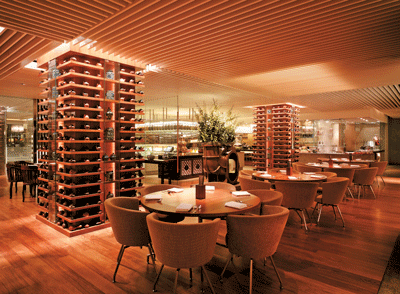
With seating arrangements that offer intimate corners for different group sizes, this restaurant is excellent for business lunches. Catering to diners of different nationalities, the restaurant can satisfy almost all dietary requirements and the menu has something for everyone, including a decent vegetarian selection. This is also a halal-compliant kitchen.
Malaysian cuisine, which has absorbed much influence from India, has some unique curry recipes of its own and at StraitsKitchen they are served alongside the Indian varieties. One might find it interesting to compare curry dishes from the two cuisines, which are made with a wide range of ingredients such as lamb or mutton, chicken, fish and prawns. Malaysian satay and Indian kebab compete for attention while the noodle section and the Chinese wok and barbeque section complete the package.
The open kitchens for various cuisines showcase the chefs’ skills and we watched for quite some time to see how naan bread was made from stratch.
Italian cuisine
While the British has their legacy in Singapore in many ways, it is certainly not their cuisine that is the most fondly remembered. For Western food, it is still advisable to turn to the Italians, who have been luring in crowds with their home cooking in The Regent hotel’s Basilico.
The 260-seat restaurant is divided into several smaller sections, each different in the mood and decoration. We were seated in a small and secluded area with the swimming pool on one side and a view of the activity around the antipasti buffet on the other. It was the perfect corner: private but not cut off, allowing us to dine in peace while still feeling that we were part of the action.
A set that included the antipasti and dessert buffets with a choice of main was on offer but we opted for the a-la-carte menu. The excellent pizza bites and grissini with tomato sauce kept us happy while we waited for our orders to arrive.
The juicy pan-fried foie gras came accompanied by wine-roasted plump figs and truffle crostone and matched with a red wine reduction. Our pesci promised to be a voyage to the ocean with sea bass, salmon, scallops and red snapper cooked in parchment with lemon, garlic and herbs, but it turned out to also include black mussels, prawns, and clams flavoured with fennel, making it a light but rather sizeable meal. We had no room for dessert, but from the look of it another trip back here to sample the sweets is in order.
Additional reporting by Margie T Logarta
Basilico, The Regent
Italian
Price: Antipasti buffet S$65 (US$ 48), dessert and ice cream buffet S$74 (US$55) + main course, lamb chops S$35 (US$25.8), wagyu beef sirloin S$48 (US$35.5)
Reservation: 65 6725 3232 email: [email protected]
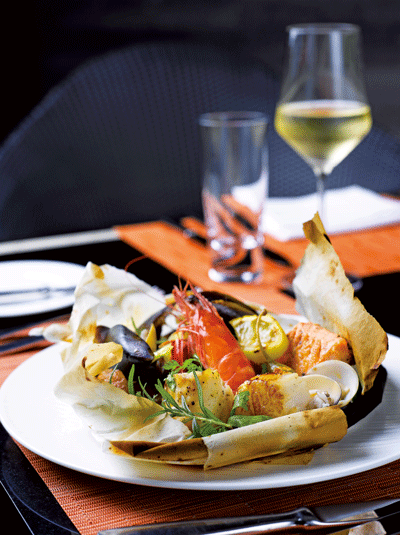
Chatterbox, Mandarin Orchard Singapore
Chinese, Malay, Peranakan
Price: Mandarin chicken rice (weekend price) S$23.80 (US$17.6), herbal bak kut teh (weekend price) S$24 (US$17.7), Mandarin lobster laksa S$32 (US$23.7)
Reservation: 65 6831 6288 Website: www.meritus-hotels.com
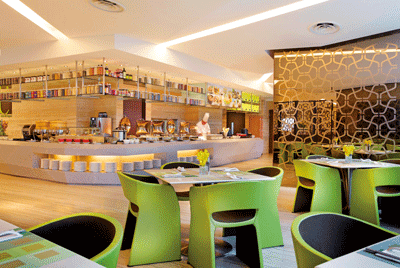
Hai Tien Lo, Pan Pacific Singapore
Chinese
Price: Dim sum lunch (weekdays) S$39 (US$28.8), weekend set lunch and dim sum buffet S$52 (US$38.4)
Reservation: 65 6826 8240 Website: www.panpacific.com
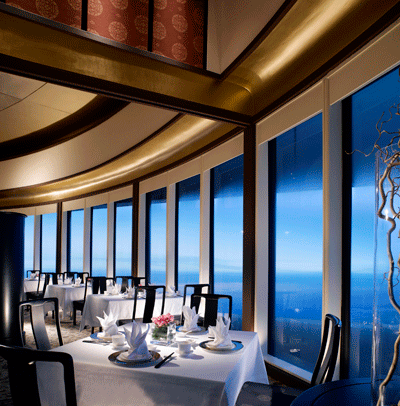
Princess Terrace Café , Copthorne King’s Hotel
Penang buffet
Lunch and dinner: S$38 (US$28)
Reservation: 65 6318 3168 Website: www.millenniumhotels.com.sg/copthornekingssingapore
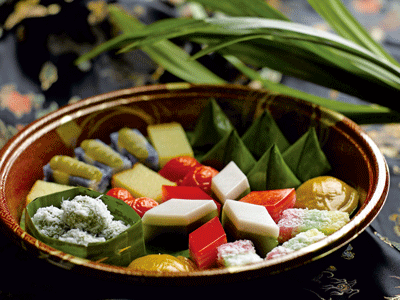
Straits Kitchen, Grand Hyatt
Malay, Chinese, Indian buffet
Price: Buffet lunch S$41 (US$30.3) Buffet dinner S$45 (US$33.3)
Reservation: 65 6732 1234
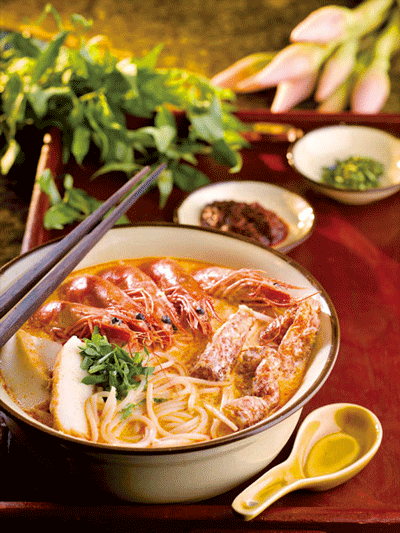
The Tiffin Room, Raffles Hotel
Northern Indian buffet
Price: Tiffin curry buffet lunch: S$60 (US$44.4), Tiffin curry buffet dinner: S$65 (US$48) Note: Reservation necessary at least two weeks in advance.
Reservation: 65 6412 1816 Website: www.raffles.com
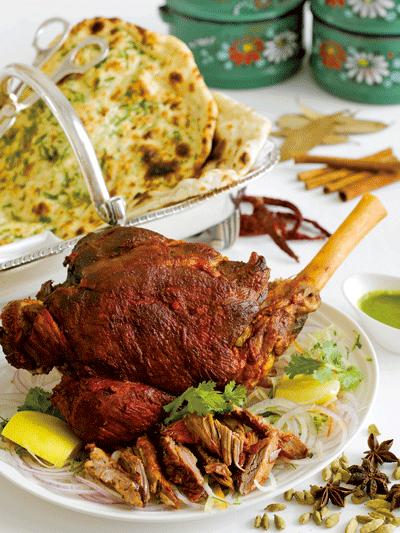
Wah Lok Cantonese Restaurant, Carlton Hotel Singapore Cantonese
Price: Peking duck (half) S$30 (US$22.2), deep-fried prawn wrapped with shredded potato S$14 (US$10.3)
Reservation: 65 6311 8188 or 6311 8189 Website: www.carltonhotel.sg








